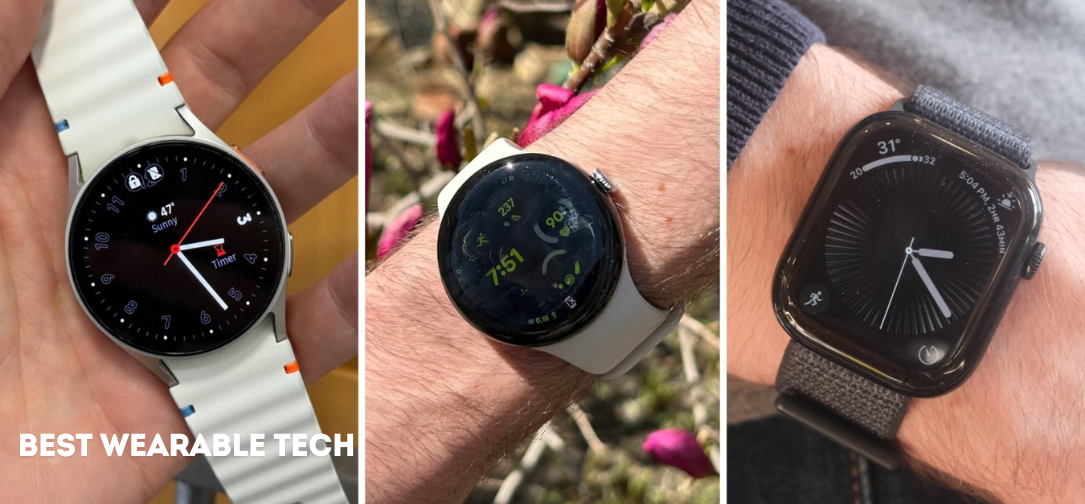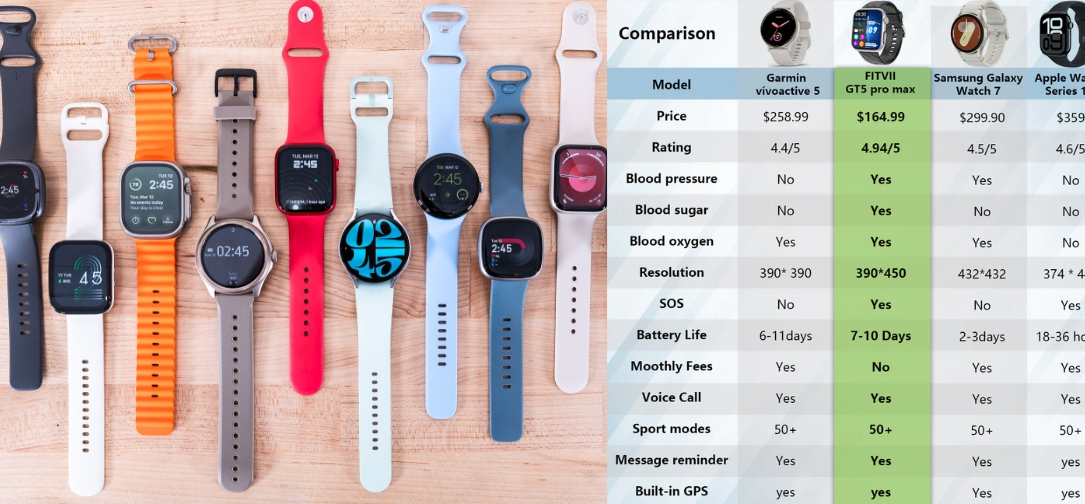Fitness & Wellness
Are Smartwatches Worth It? The Best Wearable Tech of 2025

In 2025, smartwatches have evolved from mere timekeeping devices to sophisticated wearables that integrate health monitoring, communication, and productivity tools. With technological advancements, these devices offer features that cater to various aspects of daily life. This report delves into the current state of smartwatches, evaluating their worth and highlighting the top models of the year.
The Evolution of Smartwatches
Smartwatches have transitioned from basic fitness trackers to comprehensive health and productivity companions. Modern models boast features like ECG monitoring, blood oxygen level tracking, and even blood pressure measurements. These advancements have positioned smartwatches as essential tools for health-conscious individuals.
The integration of AI and machine learning has further enhanced the capabilities of smartwatches, allowing for personalized health insights and recommendations. Moreover, the incorporation of standalone connectivity options, such as LTE and 5G, has enabled users to stay connected without relying solely on their smartphones.
Market Trends and Growth
The smartwatch market has witnessed significant growth over the past few years. According to Fortune Business Insights, the global smartwatch market was valued at USD 33.58 billion in 2024 and is projected to reach USD 105.20 billion by 2032, exhibiting a CAGR of 15.43% during the forecast period.
This growth is driven by increasing health awareness, technological advancements, and the rising demand for wearable devices that offer both functionality and style. Manufacturers are focusing on integrating features that cater to specific consumer needs, such as fitness tracking, health monitoring, and seamless connectivity.
Health and Wellness Features
One of the primary reasons consumers invest in smartwatches is for health and wellness tracking. Modern smartwatches offer a plethora of features, including:
1. Heart Rate Monitoring: Continuous tracking of heart rate during various activities.
2. ECG Monitoring: Detection of irregular heart rhythms, aiding in early diagnosis of conditions like atrial fibrillation.
3. Blood Oxygen Level Tracking: Monitoring oxygen saturation levels, crucial for individuals with respiratory conditions.
4. Sleep Tracking: Analyzing sleep patterns to provide insights into sleep quality and duration.
5. Stress Monitoring: Assessing stress levels based on heart rate variability and providing relaxation techniques.
These features empower users to take proactive steps towards maintaining and improving their health.

Top Smartwatches of 2025
- Apple Watch Series 10
The Apple Watch Series 10 continues to set the benchmark for smartwatches. It offers a sleek design, seamless integration with the Apple ecosystem, and a host of health features. However, its 18-hour battery life remains a drawback for some users.
- Samsung Galaxy Watch Ultra
Samsung’s Galaxy Watch Ultra stands out with its robust design and comprehensive health tracking capabilities, including ECG and blood pressure monitoring. It boasts an impressive battery life and is a top choice for Android users.
- Garmin fēnix 8
Designed for fitness enthusiasts and adventurers, the Garmin fēnix 8 offers extensive activity tracking, rugged durability, and a battery life of up to 10 days. Its premium price is justified by its feature-rich offerings.
- OnePlus Watch 3
The OnePlus Watch 3 impresses with its 120-hour battery life and classic design. It provides a comprehensive suite of health and communication features, making it a strong contender in the Wear OS category.
- Amazfit Active 2
For budget-conscious consumers, the Amazfit Active 2 offers a compelling package with a 10-day battery life, comprehensive health tracking, and compatibility with both Android and iOS devices.
Are Smartwatches Worth It?
The value of a smartwatch largely depends on individual needs and preferences. For health-conscious individuals, the ability to monitor vital signs and receive real-time health insights can be invaluable. Fitness enthusiasts benefit from detailed activity tracking and performance metrics. Moreover, professionals can leverage smartwatches for seamless communication and productivity on the go. However, potential drawbacks include concerns about data privacy, the need for regular charging (especially for models with shorter battery life), and the cost of premium models. It’s essential for consumers to weigh these factors against the benefits to determine if a smartwatch aligns with their lifestyle and needs.
Conclusion
Smartwatches in 2025 have transcended their initial purpose, evolving into multifunctional devices that cater to health, fitness, communication, and productivity. With a range of models available to suit various budgets and requirements, there’s likely a smartwatch that fits every individual’s needs. As technology continues to advance, we can anticipate even more innovative features in future iterations, further solidifying the role of smartwatches in our daily lives.
-

 Press Release7 days ago
Press Release7 days agoCV5 Capital Announces Standout Performance of Cryptanium Fund I SP, Beating Industry Benchmarks
-

 Business4 days ago
Business4 days agoS&P 500 Soars in Best May in Decades Amid Tariff Relief and Nvidia’s Surge
-

 Healthcare5 days ago
Healthcare5 days agoAttention Economy Arms Race: Reclaim Your Focus in a World Designed to Distract You
-

 Immigration4 days ago
Immigration4 days agoTrump’s Immigration Crackdown: Legal Battles and Policy Shifts
-

 Business4 days ago
Business4 days agoUS Stock Market Soars in May Amidst Tariff Tensions and Inflation Worries
-

 Government4 days ago
Government4 days agoTrump Administration’s Government Reshaping Efforts Face Criticism and Legal Battles
-

 Business4 days ago
Business4 days agoTrump’s Tariffs: A Global Economic Reckoning
-

 Foreign Policy2 days ago
Foreign Policy2 days agoInside Schedule F: Will Trump’s Federal Workforce Shake-Up Undermine Democracy?

















